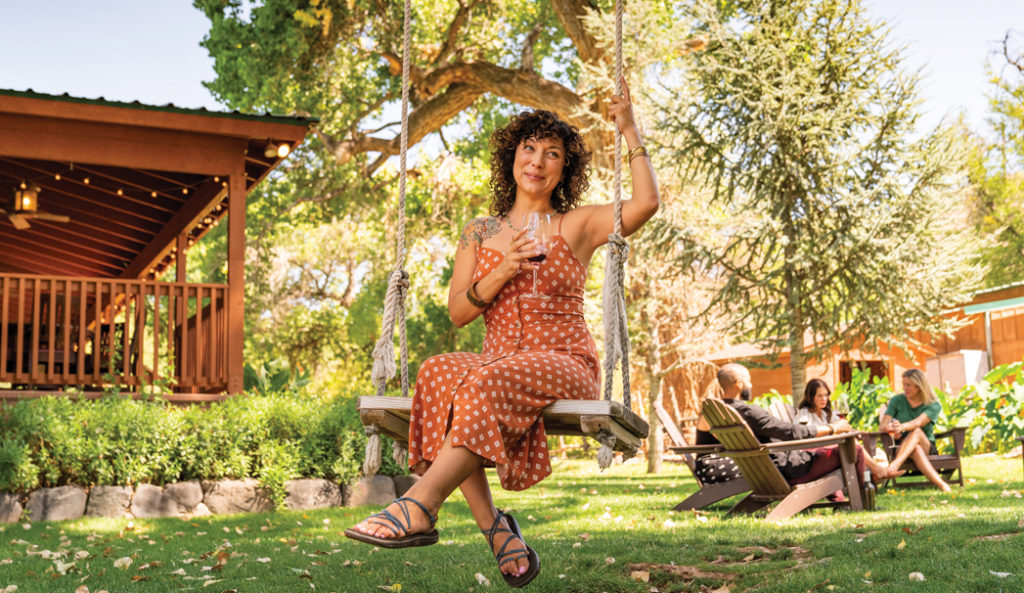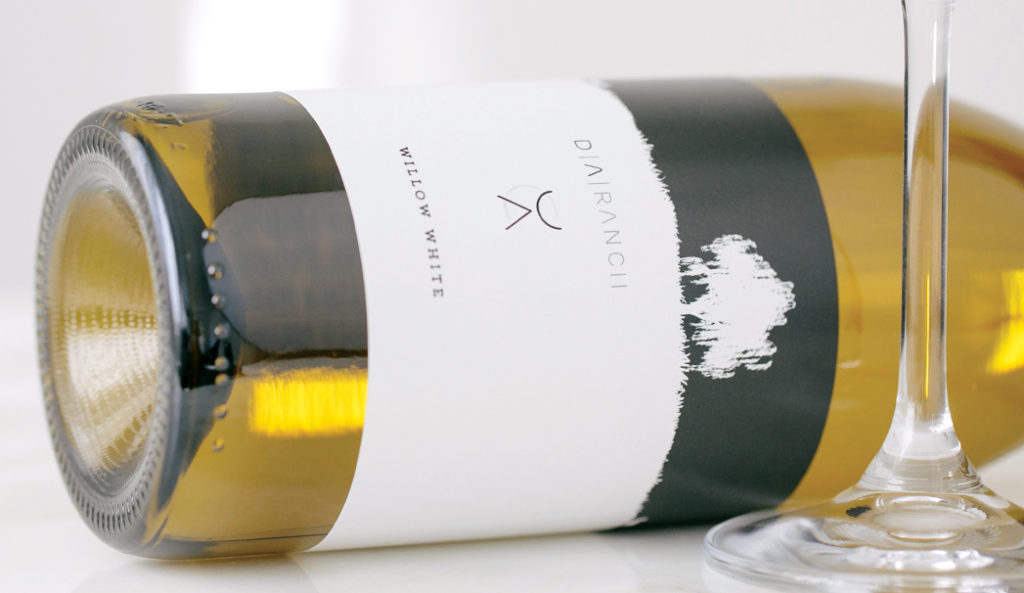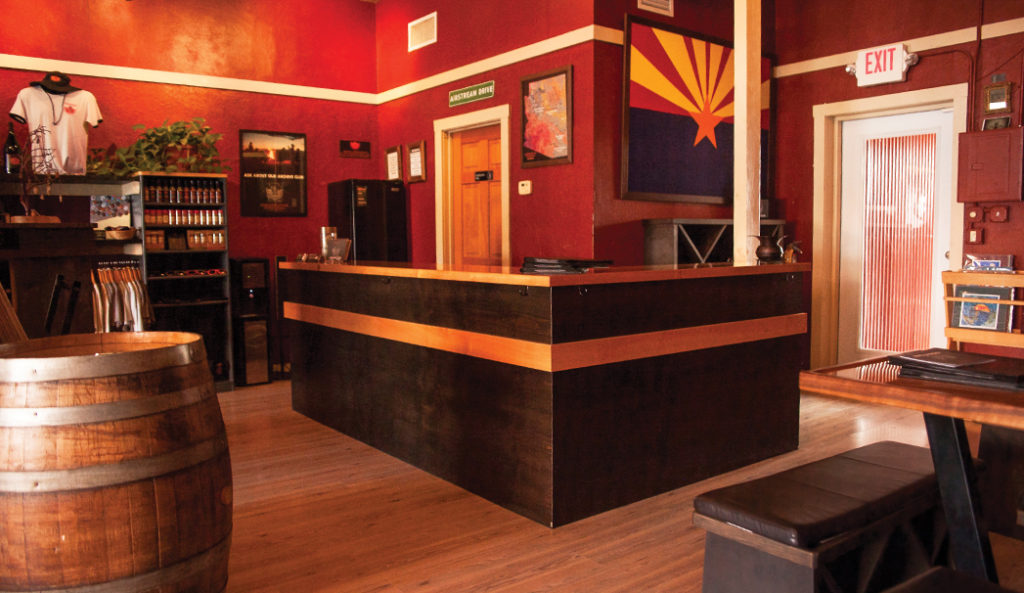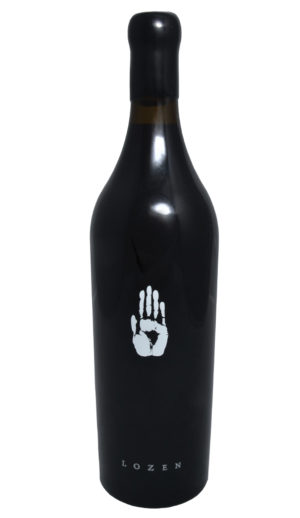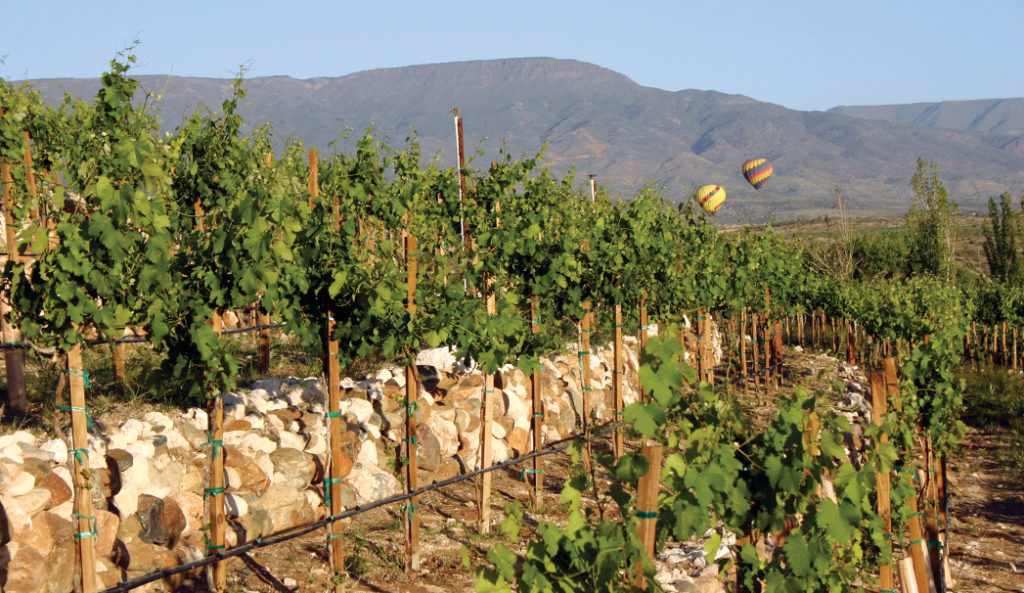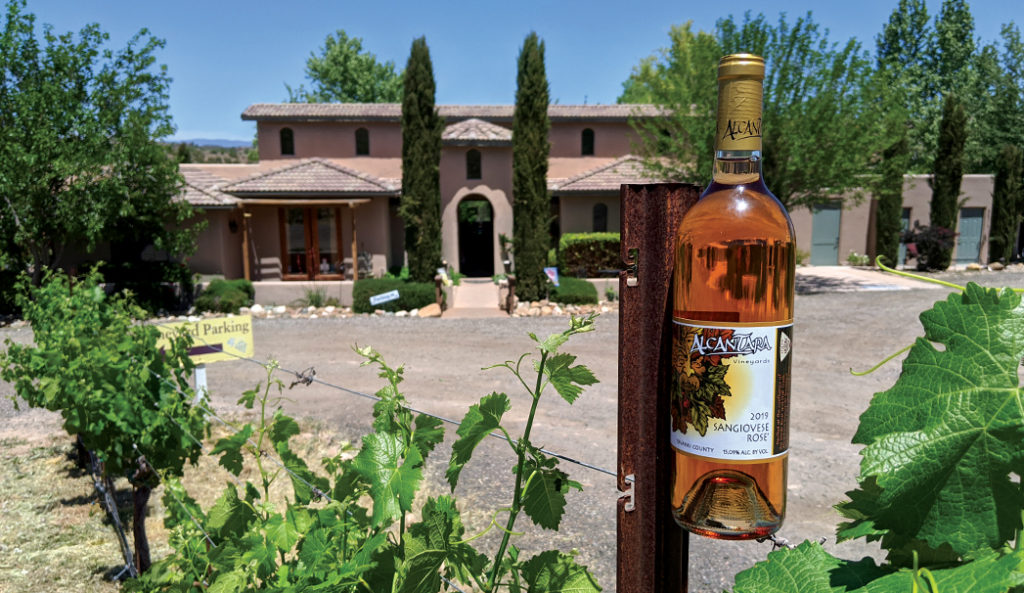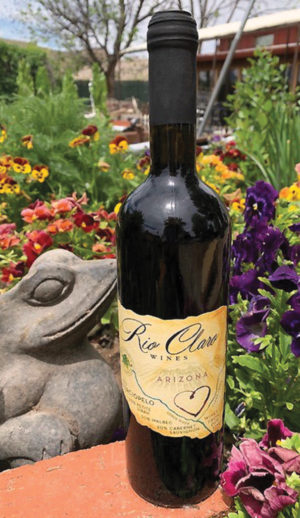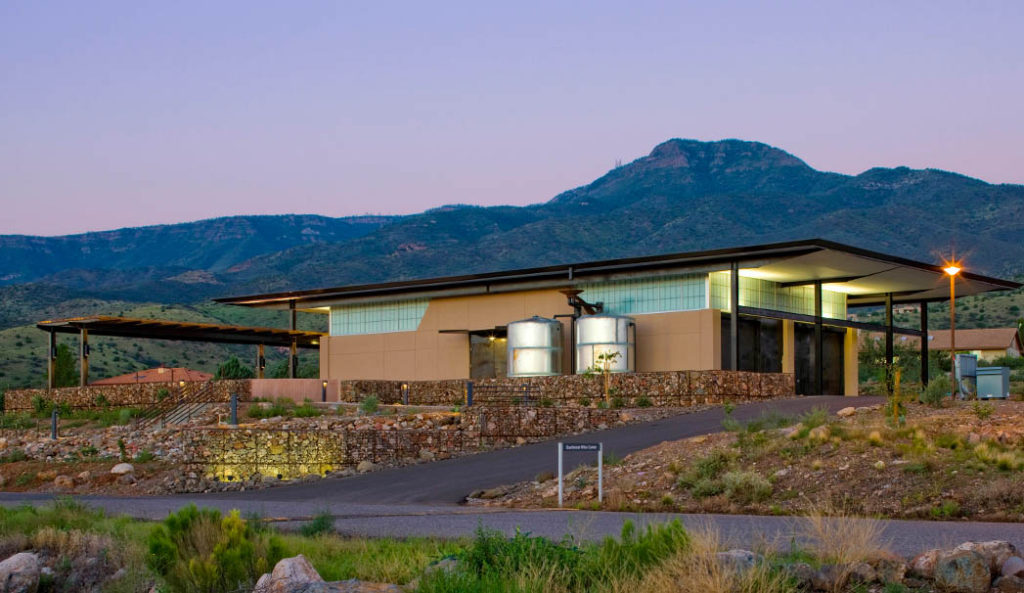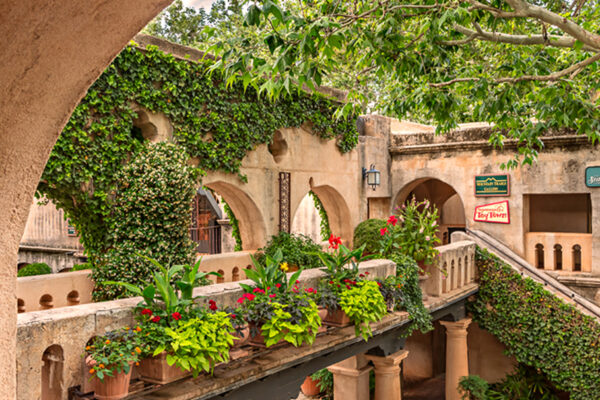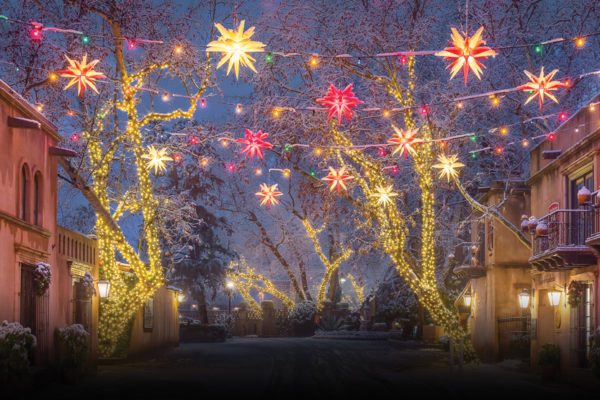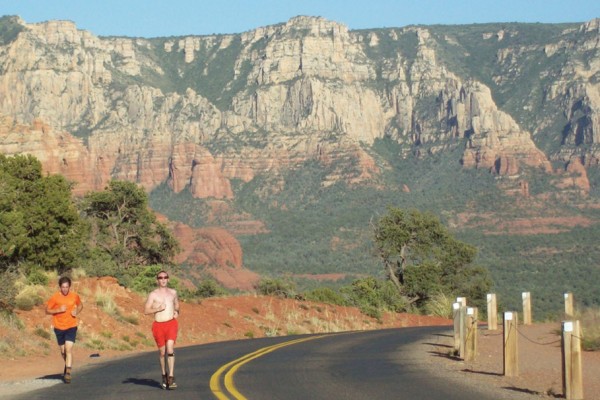D.A. RANCH
Since 2008, D.A. Ranch has produced 100 percent, estate-grown Arizona wines. Estate-grown meaning that all the grapes are grown on property. The Petznick family first purchased the land in 2002. This spot started out as a personal retreat for the family. And they immediately got to work transforming the place. Today, the 280-acre property comes complete with nine homes and numerous buildings on lush land featuring ponds and gardens. But just how did it become a winery? Well, back in 2006, Earl Petznick met with neighbor and Page Springs Cellars owner Eric Glomski.
That same year with Eric’s help and advice, the family planted their first block of syrah grapes to make wine exclusively for family and friends. With Eric’s encouragement, the family gradually began to expand their offerings. Today, about seven acres of land is under vine. And D.A. Ranch has a unique relationship with another local winery. Clarkdale’s Chateau Tumbleweed is D.A. Ranch’s sister winery. All of D.A. Ranch’s grapes are picked at the ranch, and then driven over to Chateau Tumbleweed. Grapes are crushed, barrel fermented, bottled and labeled. D.A. Ranch makes about 1,000 cases of wine annually.
“We’re actually known for having most of our wines be single varietals,” says Eden Archer, general manager of D.A. Ranch in Cornville. “We only grow one white grape, and it’s pretty unique to the area: seyval blanc. We do a dry style, and we also do a late harvest pick on that and make a sweet dessert wine that’s called Sweet Willow.”
D.A. RANCH WINE TO TRY: WILLOW WHITE
“It definitely fills a niche for Northern Arizona grown estate white wine,” says Eden, of her chosen pick: D.A. Ranch’s signature Willow White. “The seyval blanc was actually planted because it is a cold, hearty variety. Believe it or not. We’re at 3,500 feet. This block is planted close down to Oak Creek. Our property is flanked by Oak Creek. So we do get some cold air currents that come off of Oak Creek, and this grape just has really thrived for us.”
This varietal typically grows well in cooler regions. In the United Kingdom, this is the grape used to make the majority of sparkling wine. Many white grapes don’t last in Northern Arizona. But not the seyval blanc. “Arizona is a young wine industry. We started planting back in 2006. You really kind of don’t have much to go on because it’s not like there’s a huge history of what grape varietals grow well here. So there were some decisions made based on our climate, based on our location, soils, et cetera. And typically white wine grapes do not grow well in this area. Seyval blanc they’ve found to be one that’s doing really, really well. So that was a good guess.”
This area of Northern Arizona has a similar climate to France and Spain, with hot days and cool nights. The cool nights stabilize the pH and the sugars in the grapes, Eden explained. And the 2019 vintage of Willow White – named after the abundance of willow trees on the ranch – has just made its debut. Eden says it’s citrusy, yet complex. “Our 2019 vintage, I would describe it as luscious with the notes of honeysuckle and honey crisp apple Asian pear,” says Eden. “An excellent summer wine.”
Eden tells us that D.A. Ranch harvest doubled the amount of tonnage in 2019 when compared to past years, which is a good thing for consumers. “Historically, we usually end up running out of our Willow White for a few months before the next vintage is released. Hopefully this year we have enough to satisfy the masses,” she says. “We’re excited to have a little bit more juice this year.”
Visit daranch.com to learn more about D.A. Ranch. You can purchase Willow White at the tasting room in Cornville. Check D.A. Ranch’s website to see its hours of operation.
ARIZONA STRONGHOLD VINEYARDS
You’ve probably spotted Arizona Stronghold at a store or restaurant. By design, this winery has a large reach. “We’re probably best known for being available wines. We were out through distribution across a lot of the U.S. before we even had a tasting room. It’s probably the most available or accessible wine, especially in Arizona,” says Kevin Grubb, general manager of Arizona Stronghold.
And distribution is huge. Kevin explained that Stronghold was originally owned by two people who owned different wineries. They started Stronghold to put Arizona wines on the national map. It started with just four wines. The first vintage was in 2007. The Cottonwood tasting room opened in 2010.
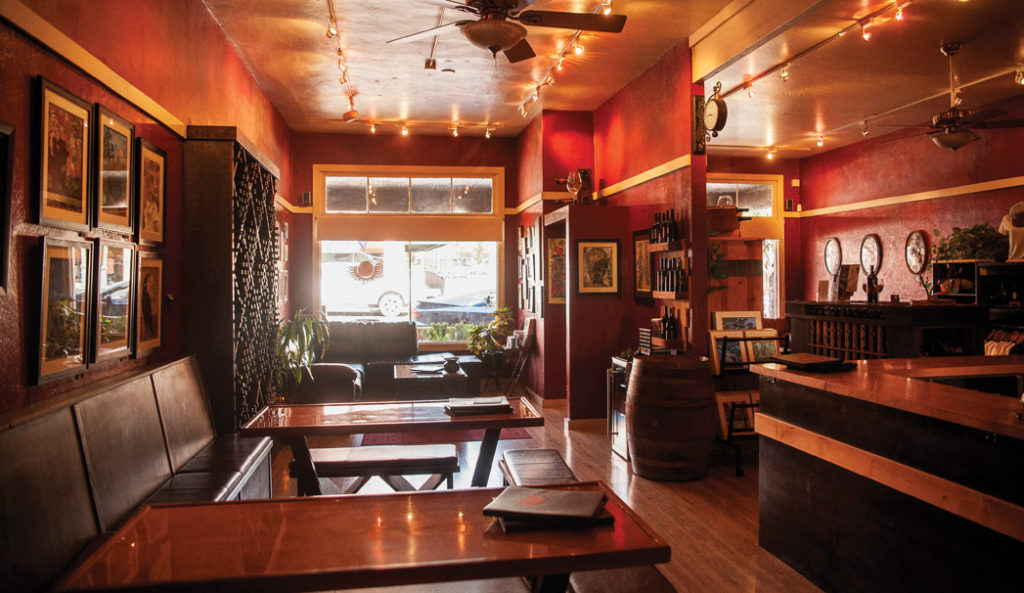
“It’s a larger production. We’re in grocery stores and restaurants,” says Kevin. “Anytime I go out to a wine shop, it’s there. And then you’ll see another one or two Arizona wines, but it’s almost kind of a staple out there.”
Long before Kevin started working for Stronghold, he would suggest its wines to customers at the restaurant where he worked. He says he felt the wines were a good representation of the Grand Canyon State. “They’re really user friendly. They’re not really esoteric,” he says. “They’re accessible. They’re drinkable. You don’t have to be a wine snob to understand why they’re delicious.”
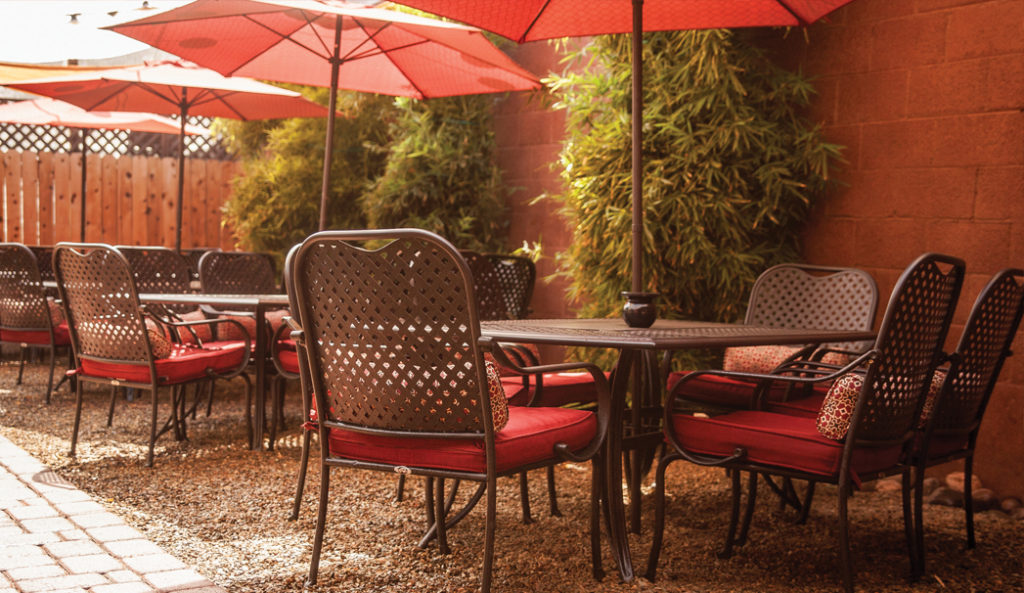
And new this year, Arizona Provisioner – an offshoot of Arizona Stronghold – is slated to open a tasting room in Old Town Cottonwood. The hope is that the tasting room will be open by the time you’re reading this. It’s a few doors down from the Red Rooster Café and one block from Stronghold’s tasting room. The new tasting room will exclusively serve Provisioner’s three wines (a white, a pink and a red). The intentionally small space will have somewhat of a general store feel to it. Kevin explained that back in the day you’d head to the store to get your “provisions.” Expect to find essentials like flour, coffee, hot sauce, straight razors and pancake mix.
ARIZONA STRONGHOLD WINE TO TRY: LOZEN
Arizona Stronghold has made Lozen since 2009. Lozen is one Arizona Stronghold’s signature, premium wines. The story behind the name of this wine is fascinating. Lozen was a legendary Apache woman. “She was just a badass. According to the Apache, she was a medicine woman, shaman and a warrior,” says Kevin. “She was one of their best warriors, and she was their number one battle strategist.” One of her stories was she had a magic power where she could put her palms out, and her hands would “vibrate” when the enemy was coming towards them so she could warn the tribe about the location of the enemy. The screen-printed white hand on the bottle is an homage to her legacy. The hand is a two-part symbol – a nod to her supposed power and the fact that her brother, the chief, referred to her as “his right hand.”
Lozen is a red wine. It’s always roughly 50/50 merlot and cabernet and a dash of malbec – a classic Bordeaux blend. It’s barrel aged, typically, for more than one year. Many of Stronghold’s wines are aged for six or eight months. “It’s always the best looking fruit that comes in from the vineyard,” says Kevin. “If it’s premium looking, the first thing out of the winemaker’s mouth is, ‘It’s going to Lozen.’” Kevin says he feels like this could compare to a Bordeaux from France.
“It’s also our best-selling wine out of the room, and it’s our most expensive wine so that says something,” says Kevin. “It also ages really well. I had a 2010 six, eight months ago, and it was drinking phenomenally.” Taste-wise, Kevin tell us it’s smooth. You also might detect red fruit, black fruit, cassis and even a tiny bit of a leathery taste. “It’s a great representation of Arizona wine,” says Kevin, of the signature red blend. “It’s good.”
Visit azstronghold.com to purchase Lozen. Arizona Stronghold is delivering to Arizona residents within 150 miles of the Verde Valley for the next few months due to summer’s high temperatures.
ALCANTARA VINEYARDS
Alcantara Vineyards opened back in 2005 after founders Barbara and Bob Predmore had visited Italy and fell in love with the Tuscan theme. You can see evidence of this in the Tuscan tasting room and chapel and rock walls – many taken from the Black Hills volcanos in the Verde Valley – throughout the property. “We’re using raw materials from the farm to make this place fun and unique,” says Ron Brumley, winemaker and vineyard manager.
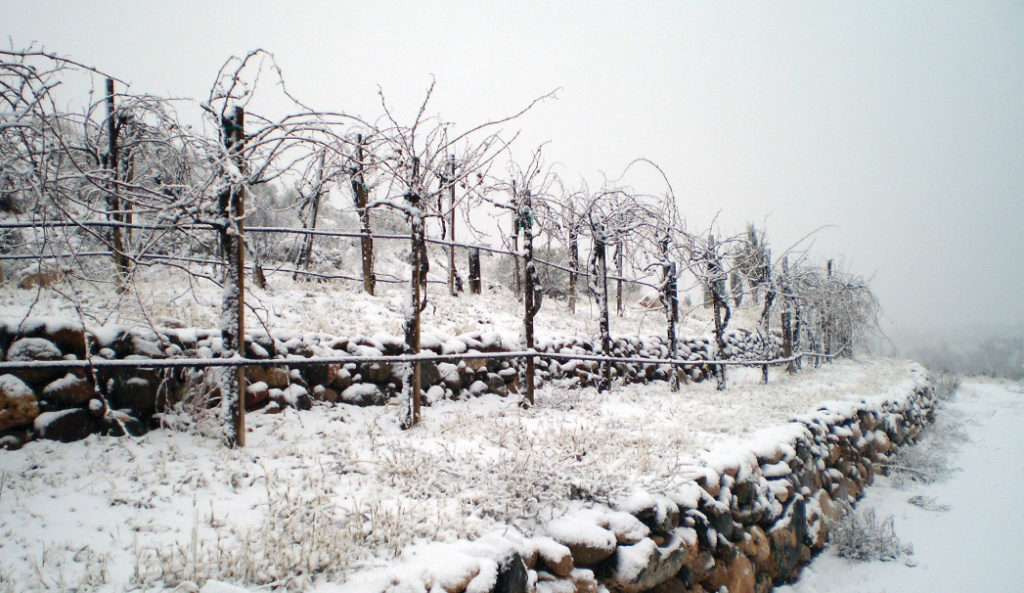
Speaking of raw materials, Alcantara has a 2,000 square foot garden of food that goes from the ground into the kitchen. Speaking of fun, Alcantara members have access to a private beach that they can use for kayaking or fishing. In addition to water sports, Alcantara also offers yoga and massages. Alcantara sits on a total of 87 acres, with 15 acres under vine. Alcantara grows 15 varietals on property, and the winery makes a total of 19 different wines. Alcantara also has plans to expand. The winery intends to add an additional tasting room and a fullservice restaurant to the east end of the property. With any luck, the tasting room will break ground at the end of 2020 with the restaurant to follow shortly after. If nothing else, expect spectacular views from both places. “They will overlook the confluence. So you’ll be able to from the tasting room or the restaurant overlook where the Verde and Oak Creek come together,” says Ron.
ALCANTARA WINE TO TRY: 2019 SANGIOVESE ROSÉ
Alcantara’s 2019 Sangiovese Rosé is a great example of making the best out of an unfortunate situation. Sangiovese is typically a red wine. But due to frost issues, it was made into a rosé. Typically, at the beginning and end of the season, you have frost problems. “We had not harvested our mourvedre or sangiovese. So those are normally red wines. We’ve always made them red wines, but we had a frost. The frost killed the leaves,” says Ron. “The fruit was still protected … so we still had really good fruit. I was expecting another week of the fruit to hang, but it couldn’t happen.”
So Ron pulled the grapes to prevent them from dying and instantly pressed the grapes. “And that’s how you make rosé: you take a red grape, you press, and you get the juice. It’s got a little pink to it, and then you ferment it off the skin,” says Ron. “If you know what you’re doing, you can fix it. It never happened to me. I had a late frost. Life gives you lemons. You make lemonade. Well, life gave me a freeze, and I made rosé.” This one was aged in French oak, giving it just a hint of “woody” taste. All Alcantara’s other whites are normally aged in stainless steel. But besides just the aging process, this rosé is special.
“It’s very soft on the mouth. So it’s very balanced from tip to swallow. But it’s got good acid. So in the middle, it’s bright acid. So it gives you a little bite. It’s super fruity. Super fruit forward. Sangiovese has notes of cherry. So we get some of that. It’s not as pronounced as if it was a red. But then it’s got little hints of strawberry,” says Ron. “So far, everybody likes it.”
Visit alcantaravineyard.com to see a list of places in Sedona where you can purchase this wine.
Alcantara Vineyards is giving away a private tour, wine and food with the winemaker for one of our readers. Follow us on social media or email info@sedonamonthly.com to enter.
CLEAR CREEK VINEYARD & WINERY
After two years of searching, Ignacio Mesa, owner and CEO of Clear Creek Vineyard & Winery, bought the 10-acre Camp Verde property in 1999. He planted his first test vineyard on the cow and horse pasture in 2000. It featured about 1,000 plants of 10 of the most classical varietals. Today, the Camp Verde estate winery grows 13 varietals. The winery opened to the public about four-and-a-half years ago. When he was a student at the University of Arizona, Ignacio took three semesters of viticulture that the college offered for free. But he majored in engineering and pursued that career path to pay the bills. All the while making homemade wine along the way.
“So I worked all over Arizona, and I was always looking for a place to grow grapes,” he says. And when he found his current location he knew it was right because of one of wine’s key ingredients: water. “It was the best, pristine water from West Clear Creek,” says Ignacio. “We get the water from the Clear Creek to water the vineyards.” Sustainability is an important part of Clear Creek. The winery doesn’t use pesticides. Instead using high nitrogen water from the bottom of his fish pond to irrigate his vineyard. Ignacio “employs” a colorful cast of animals who help maintain the winery. He has cats to keep the gofers that like to eat the plants away. Pyrenees dogs guard geese, chickens and cats from coyotes and racoons. The geese and chicken get weeds and bugs.
When he first took classes at University of Arizona, two farmers, one organic and one not, spoke to their class. When comparing the two sets of grapes, Ignacio thought the organic farmer’s grapes were higher quality. “The organic farmer who used organic matter, organic fertilizers, his grapes were beautiful. He didn’t have a problem. So I thought that was the best way to go,” says Ignacio. “When Earth was created, there were no chemical fertilizers. Everything was natural. The geese go and mow the lawn and leave a deposit. We have a lot of earthworms. You use chemical fertilizers, you kill the earthworms. Earthworms are an indication that you have healthy soil. They consume the organic matter. And they make the organic matter.”
RIO CLARO WINE TO TRY: 2012 TERCIOPELO RED BLEND
Terciopelo is Spanish for “velvet.” And the story behind the name is very sweet. “I like to give my wines Spanish names whenever I can because of my heritage,” says Ignacio, whose family hails from Spain and later moved to Mexico and then Arizona. His wines are under the “Rio Claro” label, which means “clear river” in Spanish. “’Terciopelo’ is a word of a love song. When I was young, my father would hug my mother when she was cooking breakfast, and he would sing her a love song. And that song contained the word ‘terciopelo.’”
He came up with the idea after meeting with a winemaker in Bordeaux on a trip to Europe. She told him the area was surrounded by limestone, an important mineral for wine grapes – just like his winery – and decided on his own Bordeaux blend. This red blend is 20 percent cabernet sauvignon, 30 percent malbec and 50 percent petit sirah. “It’s a full-bodied wine. It’s about seven years old,” says Ignacio. “It’s my go-to wine for ribeye steaks.” Taste-wise, Ignacio says you should expect to detect currants. “It’s a little bit on the fruity side,” he says. “Nice tannins and real smooth. Full bodied with a nice mouth feel.”
Visit clearcreekwineryaz.com for more information and to purchase wines.
VERDE VALLEY’S SUSTAINABLE WINE PRODUCTION
BY TOM PITTS
I wrote a column in March about how wine grapes, with their low water demand and long productive life, are rapidly becoming Arizona’s signature sustainable crop. These are arid region crops that are quite comfortable here. Even so, agriculture in a desert demands constant awareness of our scarcest resource – water. Our local winemakers have been quite aware of that and, without fail, have been conscientious in their role as stewards of their land. Every single one is in it for the long haul. Sustainability is intrinsic to every vineyard operation here. These are a few award-winning examples that stand out. A visit to Clear Creek Winery is always a treat. Owner Ignacio Mesa is completely dedicated to making his a truly sustainable business. And the retired SRP Project Manager is always willing to talk about his efforts and achievements in that regard. This was the first winery in Arizona to attain Silver Innovator Sustainable Certification from the Arizona Sustainability Alliance. Read more about Clear Creek’s sustainability efforts on this same page.
When you visit Page Springs Cellars and pull into the covered parking area, you are parking under a solar panel array – and it’s hard to miss the solar panels on the roof of the winery. They are currently very close to 100 percent off the grid when it comes to their electricity needs. Less obviously, they are recycling almost 100 percent of its waste, including waste water, which they process on-site. They mulch most of the plant material they generate and practice no-till agriculture, using native grasses and other green ground cover. They, too, are now a certified Silver Innovator, and they have been a recognized leader in training winemakers and vineyard staff throughout Arizona.
The Southwest Wine Center at Yavapai College’s Clarkdale Campus was designed from day one to be a sustainable teaching winery. We set out to not only make it sustainable in its own footprint, but with the intent of establishing sustainability as a cornerstone of the core curriculum. Everyone has taken it to heart. This is a third certified Silver Innovator, a well-earned designation. The
adaptive reuse process utilized to design the winery included thick walls to raise thermal mass to stabilize temperatures, an oversized roof to provide shade and to help capture rainwater to be stored for irrigation, and specialized windows and louvres to control air flow and maintain temperatures. It requires less than half the energy a normal building would need. The vineyard drip
irrigation system operates with sensors, minimizing water usage. And we were able to work with the City of Cottonwood to secure reclaimed water for irrigation. Next time you’re sipping a glass of wine from one of these three places, we hope you toast to sustainability.


